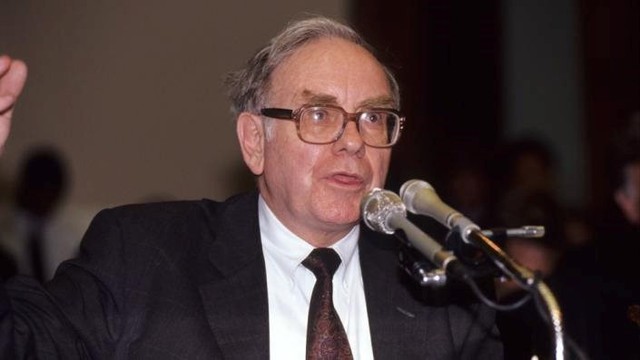How Warren Buffett’s midnight call saved America, creating “the most successful but also most hated bailout in human history”?
- Tram Ho
Unexpected call
One night in October 2008, at the height of the financial crisis, legendary investor Warren Buffett called then-U.S. Treasury Secretary Henry “Hank” Paulson. His aim in making this important call was to share ideas that could help revive a struggling economy.
The information on the sidelines of this call was revealed by Paulson in the documentary “Panic: The Untold Story of the 2008 Financial Crisis”.
Around that time, Paulson faced a lot of pressure. The US Congress passed the Emergency Economic Stabilization Act with many measures to rescue the economy, and established the $700 billion Bad Asset Rescue Fund (TARP) to buy back the assets of the US government. However, these measures have not yet been able to reassure investors. The market is still panicking.
“ Although Congress has acted, the situation continues to deteriorate. America has continuously witnessed two of the biggest bank failures in history – that of Wachovia and Washington Mutual. There needs to be something that works faster and more powerfully ,” says Paulson.

Before taking the call from Buffett, he spent the evening discussing ideas with his team to restore confidence on Wall Street. The stress left Paulson almost exhausted.
When he picked up the phone, he completely did not recognize the voice on the other end of the line. “ My mother had a maid named Warren. I even asked him why he was calling me in the middle of the night ,’ recalls Paulson humorously.
In the end, that unexpected call brought a great solution for the US economy. According to Buffett, injecting capital directly to banks will be a much more effective way than buying bad assets that the US is doing.
At the suggestion of the Oracle of Omaha, on October 13, a meeting was held with the participation of CEOs of leading US banks such as John Mack of Morgan Stanley, Jamie Dimon of JPMorgan Chase, Lloyd Blankfein of Morgan Stanley. Goldman Sachs, John Thain of Merrill Lynch and Vikram Pandit of Citigroup. Together they discussed the proposal of the Ministry of Finance.
Protest protest
While not all banks are asking for immediate help, some CEOs fear the cash injection will make investors think it’s a sign of financial trouble and lead to a wave of cash flows. capital withdrawal. However, Paulson stressed that the important nature of this bailout package remains to restore confidence in the US economy.
Finally, the US Treasury Department injected $250 billion into the banking system, using funds from TARP.
But this bailout has caused a lot of controversy. Many protesters took to the streets to protest against taking taxpayer money to rescue wealthy investors on Wall Street – the group that in many eyes is the culprit that caused the financial crisis because of greed and judgment. wrong guess.
Sharing about this issue, former Fed Chairman Ben Bernanke said: “There are still a lot of people who believe that we are trying to rescue banks and companies on Wall Street with the purpose of saving friends in the financial industry. rather than to protect the American economy.”
Paulson, Bernanke and New York Fed President Timothy Geithner have all emphasized their goal is to support “Main Street” by saving Wall Street. While acknowledging the shortcomings of the bailout program, such as failing to prevent Lehman Brothers from collapsing, they still insist that pumping money to rescue banks is a wise choice.
Paulson called it “the most successful but also most hated rescue program in human history”. From 2009 to now, the US stock market as well as the S&P 500 index have recovered firmly.
Former President Bush believes that “this is probably the greatest bailout program ever.” Timely intervention helped the US avoid a deep recession.
The world cannot avoid another financial crisis
A decade later, in 2018, Buffett sees the world as inevitable yet another financial crisis fueled by the envy and greed that are the most basic of human traits.
By last March, a series of small to medium sized banks in the US had collapsed.
The wave of bankruptcy made the global banking system more or less turbulent as bank stocks raced to fall. However, the fire was eventually extinguished and did not spread globally. Buffett praised the US government’s decisive action.
He said it is not surprising that banks fail when the US banking system is becoming increasingly complex. He is gradually divesting from banks, starting from the outbreak of the pandemic and continues to sell bank shares in the last 6 months. The reason is that many banks are not well managed and enjoy undeserved incentives.
Refer to Yahoo Finance
Source : Genk
